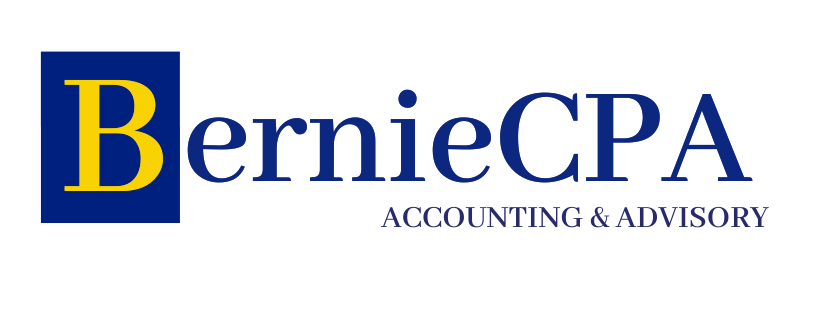Uncovering the Power of Beneficial Ownership: What You Need to Know
Beneficial ownership refers to the individuals who ultimately own or control a company or asset, even if their names do not appear on the official documents. This concept is crucial in understanding the true ownership and control of companies, as it helps to uncover the individuals who may be using complex legal structures to hide their ownership interests. Beneficial owners may include individuals, entities, or even other companies, and they may exercise their control through direct or indirect means. Understanding beneficial ownership is essential for promoting transparency and accountability in the financial system, as it helps to prevent illicit activities such as money laundering, tax evasion, and corruption. By identifying the true owners of companies and assets, regulators and law enforcement agencies can better assess the risks associated with certain transactions and take appropriate actions to mitigate them.
Beneficial ownership can be difficult to uncover, as individuals and entities may use various legal mechanisms to conceal their ownership interests. This can include using nominee shareholders or directors, creating complex corporate structures, or establishing offshore entities in jurisdictions with strict secrecy laws. As a result, beneficial ownership transparency has become a major focus for regulators and policymakers around the world, as they seek to enhance the integrity of the financial system and combat financial crime. By understanding the complexities of beneficial ownership and the methods used to obscure it, regulators can develop more effective strategies for uncovering and reporting beneficial ownership information.
The Importance of Transparency in Beneficial Ownership
Transparency in beneficial ownership is crucial for promoting integrity and trust in the financial system. When the true owners of companies and assets are hidden, it creates opportunities for illicit activities such as money laundering, tax evasion, and corruption. By promoting transparency in beneficial ownership, regulators and law enforcement agencies can better assess the risks associated with certain transactions and take appropriate actions to mitigate them. This can help to protect the financial system from abuse and ensure that it operates in a fair and transparent manner.
Furthermore, transparency in beneficial ownership is essential for promoting accountability and preventing conflicts of interest. When the true owners of companies and assets are known, it becomes easier to hold them accountable for their actions and ensure that they are not using their control for personal gain at the expense of others. This can help to promote a level playing field for businesses and investors, as well as foster trust and confidence in the financial system. Ultimately, transparency in beneficial ownership is essential for promoting a fair and transparent financial system that operates with integrity and accountability.
The Impact of Beneficial Ownership on Financial Systems
Beneficial ownership has a significant impact on financial systems, as it can affect the integrity, stability, and transparency of the system as a whole. When the true owners of companies and assets are hidden, it creates opportunities for illicit activities such as money laundering, tax evasion, and corruption. This can undermine the integrity of the financial system and erode public trust in its operations. Furthermore, beneficial ownership can also impact the stability of financial systems, as hidden ownership interests can create risks that may not be properly assessed or mitigated. This can lead to increased volatility and uncertainty in financial markets, as well as potential systemic risks that could threaten the stability of the entire system.
Additionally, beneficial ownership can also impact the transparency of financial systems, as it can make it difficult for regulators and law enforcement agencies to assess the risks associated with certain transactions. This can hinder their ability to detect and prevent illicit activities, which can further undermine the integrity of the financial system. As a result, promoting transparency in beneficial ownership is essential for enhancing the integrity, stability, and transparency of financial systems around the world.
The Role of Beneficial Ownership in Anti-Money Laundering and Counter-Terrorism Financing
Beneficial ownership plays a crucial role in anti-money laundering (AML) and counter-terrorism financing (CTF) efforts, as it helps to uncover the individuals who may be using complex legal structures to hide their ownership interests. By identifying the true owners of companies and assets, regulators and law enforcement agencies can better assess the risks associated with certain transactions and take appropriate actions to mitigate them. This can help to prevent illicit activities such as money laundering and terrorist financing, which can have serious consequences for the integrity and stability of financial systems.
Furthermore, beneficial ownership transparency is essential for promoting accountability and preventing conflicts of interest in AML and CTF efforts. When the true owners of companies and assets are known, it becomes easier to hold them accountable for their actions and ensure that they are not using their control for personal gain at the expense of others. This can help to promote a level playing field for businesses and investors, as well as foster trust and confidence in AML and CTF efforts. Ultimately, beneficial ownership plays a critical role in AML and CTF efforts by promoting transparency, accountability, and integrity in the financial system.
The Challenges of Identifying Beneficial Ownership
Identifying beneficial ownership can be challenging due to the complex legal structures and mechanisms used to conceal ownership interests. Individuals and entities may use nominee shareholders or directors, create complex corporate structures, or establish offshore entities in jurisdictions with strict secrecy laws to hide their true ownership interests. This can make it difficult for regulators and law enforcement agencies to uncover the individuals who ultimately own or control a company or asset. Additionally, beneficial owners may exercise their control through direct or indirect means, further complicating efforts to identify them.
Furthermore, identifying beneficial ownership can be challenging due to the lack of standardized reporting requirements across jurisdictions. Different countries may have different rules and regulations regarding beneficial ownership reporting, making it difficult to obtain consistent and reliable information. This can hinder efforts to assess the risks associated with certain transactions and take appropriate actions to mitigate them. As a result, identifying beneficial ownership presents significant challenges for regulators and law enforcement agencies around the world.
Strategies for Uncovering and Reporting Beneficial Ownership
Despite the challenges of identifying beneficial ownership, there are several strategies that regulators and law enforcement agencies can use to uncover and report beneficial ownership information. One strategy is to enhance beneficial ownership reporting requirements by implementing standardized rules and regulations across jurisdictions. This can help to ensure that consistent and reliable information is available for assessing the risks associated with certain transactions. Additionally, regulators can use technology such as data analytics and artificial intelligence to analyze large volumes of data and identify potential red flags that may indicate hidden beneficial ownership interests.
Another strategy is to enhance international cooperation and information sharing among regulators and law enforcement agencies. By working together across borders, regulators can access valuable information from other jurisdictions that may help them uncover hidden beneficial ownership interests. This can help to enhance the effectiveness of efforts to combat illicit activities such as money laundering and terrorist financing. Additionally, regulators can work with financial institutions and other stakeholders to develop best practices for identifying beneficial ownership and reporting relevant information.
The Future of Beneficial Ownership Regulations and Compliance
The future of beneficial ownership regulations and compliance is likely to involve continued efforts to promote transparency, accountability, and integrity in the financial system. Regulators around the world are likely to continue enhancing beneficial ownership reporting requirements by implementing standardized rules and regulations across jurisdictions. This can help to ensure that consistent and reliable information is available for assessing the risks associated with certain transactions. Additionally, regulators are likely to continue using technology such as data analytics and artificial intelligence to analyze large volumes of data and identify potential red flags that may indicate hidden beneficial ownership interests.
Furthermore, international cooperation and information sharing among regulators are likely to play an increasingly important role in uncovering hidden beneficial ownership interests. By working together across borders, regulators can access valuable information from other jurisdictions that may help them uncover hidden beneficial ownership interests. This can help to enhance the effectiveness of efforts to combat illicit activities such as money laundering and terrorist financing. Additionally, regulators are likely to continue working with financial institutions and other stakeholders to develop best practices for identifying beneficial ownership and reporting relevant information.
In conclusion, understanding beneficial ownership is crucial for promoting transparency, accountability, and integrity in the financial system. Transparency in beneficial ownership is essential for preventing illicit activities such as money laundering, tax evasion, and corruption, as well as promoting accountability and preventing conflicts of interest. Beneficial ownership has a significant impact on financial systems, as it can affect their integrity, stability, and transparency. It plays a crucial role in anti-money laundering (AML) and counter-terrorism financing (CTF) efforts by promoting transparency, accountability, and integrity in the financial system. However, identifying beneficial ownership presents significant challenges due to complex legal structures used to conceal ownership interests and lack of standardized reporting requirements across jurisdictions.
Despite these challenges, there are several strategies that regulators and law enforcement agencies can use to uncover and report beneficial ownership information. These include enhancing beneficial ownership reporting requirements by implementing standardized rules and regulations across jurisdictions, using technology such as data analytics and artificial intelligence to analyze large volumes of data, enhancing international cooperation and information sharing among regulators, working with financial institutions and other stakeholders to develop best practices for identifying beneficial ownership.
The future of beneficial ownership regulations and compliance is likely to involve continued efforts to promote transparency, accountability, and integrity in the financial system through enhanced reporting requirements by implementing standardized rules across jurisdictions using technology such as data analytics enhancing international cooperation among regulators working with financial institutions developing best practices for identifying beneficial ownership.
Overall, understanding beneficial ownership is essential for promoting transparency, accountability, integrity in financial systems combating illicit activities such as money laundering terrorist financing promoting stability trust in financial markets fostering a level playing field for businesses investors around the world.


